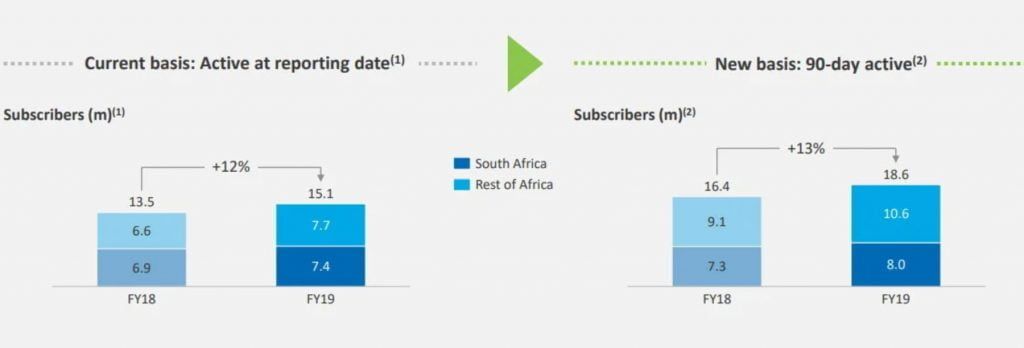Ever since huge streaming platforms like Netflix launched globally in 2016, traditional satellite broadcasting companies like Multichoice have been registering a dwindling number of subscribers who opt to watch on-demand TV and not rely on repeated shows aired on DStv.
The company has taken several measures to keep afloat, in addition to signing agreements with Netflix and Amazon Prime, they have also bundled DStv Premium and DStv Compact Plus subscriber numbers together plus changing the way it counts subscribers.
Until this year, MultiChoice reported its subscriber numbers based on how many paying subscribers it had at on 31 March every year – the last day of its financial year.
In 2020, MultiChoice switched to reporting the number of subscribers that have been active in the past 90 days.
It should be noted that this reporting change was announced when the company released its first financial results last year as an independently listed entity on the JSE.
To illustrate the impact of this change, the image below shows a side-by-side comparison of how the total MultiChoice subscriber numbers being reported changed.

When looking at the total MultiChoice subscriber base, the new reporting method increases the number of subscribers in 2019 from 15.1 million to 18.6 million.
As a result of these changes, it is no longer possible to easily plot the decline of DStv Premium in Africa.
MultiChoice chief financial officer Tim Jacobs said that when Naspers spun off the MultiChoice Group into its own JSE listing in February 2019, they decided to change the reporting method.
“We had to make a choice between giving more information than what people were getting under the Naspers umbrella, but at the same time recognizing that this is really competitive information and we don’t want to get to that level of granularity,” Jacobs stated.
“What we tried to do was to give additional metrics such as the average revenue per unit (ARPU) and price increase within that bucket of bouquets.”
Jacobs said these changes were generally favorably received by investors, though he admitted that some investors have been frustrated at not being able to drill down into a specific bucket, like MultiChoice’s DStv Premium subscriber numbers.
The table below shows the total subscribers across all the regions in which the MultiChoice group operates.
| Year | DStv subscribers at 31 March | 90-day Active DStv subscribers | DStv Premium subscribers on 31 March | DStv Premium and Compact Plus subscribers on 31 March | 90-day Active DStv Premium and Compact Plus subscribers |
|---|---|---|---|---|---|
| 2012 | 5,611,000 | – | 2,188,290 | – | – |
| 2013 | 6,739,000 | – | 2,291,260 | – | – |
| 2014 | 8,059,000 | – | 2,256,520 | – | – |
| 2015 | 10,225,000 | – | 2,351,750 | – | – |
| 2016 | 10,411,000 | – | 2,097,000 | – | – |
| 2017 | 11,942,000 | – | 1,962,000 | – | – |
| 2018 | 13,476,000 | 16,400,000 | 1,921,000 | 2,400,000 | – |
| 2019 | 15,097,000 | 18,600,000 | – | 2,500,000 | 2,600,000 |
| 2020 | 15,743,000 | 19,500,000 | – | – | 2,700,000 |

